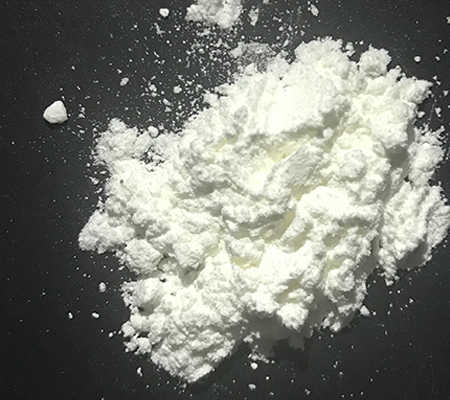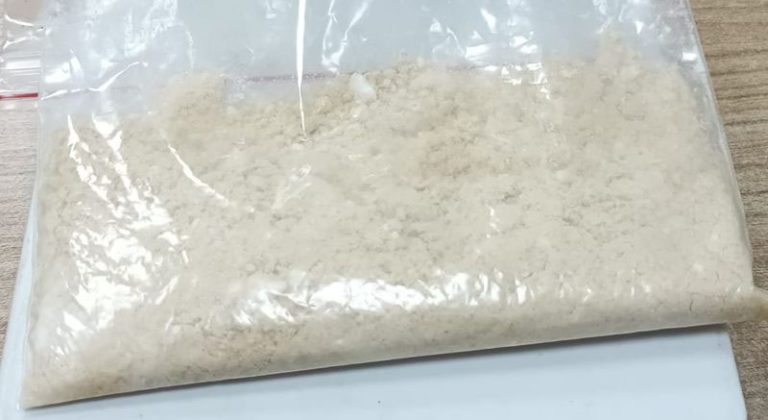Description
O-Desmethyltramadol
(also known as O-DSMT and desmetramadol) is an opioid substance of the phenylpropylamine class. It is an active metabolite of tramadol.
O-DSMT has no documented history of human use before it appeared for sale on the research chemical market in the 2010s.
Subjective effects
O-DSMT include sedation, pain relief, anxiety suppression, muscle relaxation, and euphoria. In comparison to tramadol, O-DSMT is reporte to be less stimulat and feel considerabl closer to a traditional opiate. Being the metabolite that is mainly responsible for the analgesic effect of tramadol, O-DSMT is significantly more potent by weight than its parent compound.
O-DSMT has a very short history of human use and not much is know about its toxicit and abuse potential. It is highly advise to use harm reduction practices if use this substance.
O-Desmethyltramadol or 3-(2-((dimethylamino)methyl)-1-hydroxycyclohexyl)phenol is an atypical synthetic opioid. O-Desmethyltramadol is loosely analogous to codeine, but is not a morphinan opiate. Instea, it contain two ring includ a cyclohexane ring that is bonde to a phenyl ring at R1. This phenyl ring is substitute at R3 with a hydroxy group (OH-). An additional hydroxy group is found at the same location the cyclohexane ring is bonde to at the phenyl ring, R1. O-DMST features a third substitution on its cyclohexane ring at R2. Here the ring is bonde to a dimethylamine group connecte through a methylene bridge.
O-Desmethyltramadol is atypical as it is found in a racemate (combination) of its stereoisomer. Stereoisomer are two molecule that share the same chemical structure, but are three-dimensional mirror images of each other. Tramadol is produced as a racemate of its two isomers because the combination is proven to be more effective. Flipping the direction of the R2 and R1 bonds results in the R- and S- enantiomers of O-Desmethyltramadol. O-DMST is nearly identical to tramadol, and is named for the lack of the methyl group of tramadol’s R3 methoxy substituion.
Pharmacology
O-DSMT is considerably more potent as a μ-opioid agonist compared to tramadol. Additionally, unlike tramadol, it is a high-affinity ligand of the δ- and κ-opioid receptors.
The two enantiomers of O-DSMT show quite distinct pharmacological profiles; both (+) and (−)-O-DSMT are inactive as serotonin reuptake inhibitors,[6] but (−)-O-DSMT retains activity as a norepinephrine reuptake inhibitor and so the mix of both the parent compound and metabolites contributes significantly to the complex pharmacological profile of tramadol. While the multiple receptor targets can be beneficial in the treatment of pain (especially complex pain syndromes such as neuropathic pain).it increases the potential for drug interactions compared to other opioids and may also contribute to side effects.
Toxicity and harm potential
Further information: Research chemicals § Toxicity and harm potential
O-DSMT has a moderate potential toxicity relative to its dose due to its potency. As with all opioids long-term effects can vary but can include diminished libido, apathy and memory loss. It is also potentially lethal when mixed with depressants like alcohol or benzodiazepines.
O-DSMT has recently been marketed as a currently legal substitute for illegal opioid drugs, either in powder form or mixed into various other preparations. One such blend was sold under the brand Krypton and contains powdered kratom leaf (Mitragyna speciosa) laced with O-DSMT and was reportedly linked to at least 9 accidental deaths from overdose during 2010–2011.
Tolerance and addiction potential
As with other opioid the chronic use of O-DSMT can be considere moderatel addictive with a high potential for abuse and is capable of caus psychological dependence among certain user. When addiction has develope, craving and withdrawal symptom may occur if a person suddenly stop their usage.
Tolerance to many of the effects of O-DSMT develops with prolonged and repeated use. The rate at which this occurs develops at different rates for different effects, with tolerance to the constipation-inducing effects developing particularly slowly for instance. This results in users having to administer increasingly large doses to achieve the same effects. O-DSMT presents cross-tolerance with all other opioids, meaning that after the consumption of O-DSMT all opioids will have a reduced effect.



Reviews
There are no reviews yet.